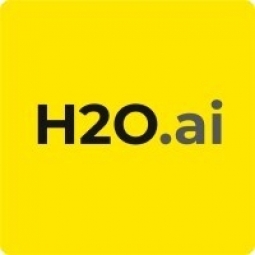公司规模
Large Corporate
地区
- America
国家
- Canada
产品
- H2O Driverless AI
- AIMIA’s SmartJourney®
技术栈
- Machine Learning
- AI
实施规模
- Enterprise-wide Deployment
影响指标
- Cost Savings
- Revenue Growth
- Productivity Improvements
技术
- 分析与建模 - 机器学习
- 分析与建模 - 预测分析
适用行业
- 零售
- 消费品
适用功能
- 销售与市场营销
- 商业运营
用例
- 预测性维护
- 欺诈识别
服务
- 数据科学服务
- 软件设计与工程服务
关于客户
AIMIA is a company based in Quebec, Canada, that specializes in customer engagement and loyalty solutions. They work with leading retail, CPG, travel & hospitality, financial services, and entertainment brands. AIMIA's solutions help brands identify where their customers fall in key milestones along the customer journey, influencing touch points along that journey. They have developed a new methodology called SmartJourney® that helps predict gaps in this journey, identify at-risk revenue or new growth opportunities. Building such complex loyalty solutions can be a very daunting effort involving business, data science, engineering, and IT teams. It requires building sophisticated machine learning models, iterating them with the right datasets, deploying them in their customer environments, and eventually monitoring them in production.
挑战
AIMIA, a global leader in customer engagement and loyalty solutions, faced challenges in predicting customer churn and detecting fraud due to the lack of relevant datasets and the steady evolution of fraudulent behavior. The development of machine learning techniques in the face of these challenges was difficult. There was a need to increase the agility of model development, build newer use-cases quickly, iterate on them faster, improve overall trust in AI by making the results of machine learning algorithms transparent to business stakeholders, as well as benchmark the performance of the models already in production.
解决方案
AIMIA implemented H2O Driverless AI to reduce the model development time in half, delivering a 700% increase in cost savings for their customers’ campaigns. AIMIA’s SmartJourney® methodology analyzes customer behavior and engagement across a variety of stages. Using Driverless AI, they developed a classification model that predicts whether a certain customer will churn or not. Automating the complex feature engineering process to derive new features from existing variables significantly contributed to overall time-savings. In addition, visualizing the datasets before starting model building, understanding the results in different formats and the confusion matrix made it convenient to derive meaningful insights from the data in a few hours, as opposed to days or months.
运营影响
数量效益

Case Study missing?
Start adding your own!
Register with your work email and create a new case study profile for your business.
相关案例.
.png)
Case Study
Improving Vending Machine Profitability with the Internet of Things (IoT)
The vending industry is undergoing a sea change, taking advantage of new technologies to go beyond just delivering snacks to creating a new retail location. Intelligent vending machines can be found in many public locations as well as company facilities, selling different types of goods and services, including even computer accessories, gold bars, tickets, and office supplies. With increasing sophistication, they may also provide time- and location-based data pertaining to sales, inventory, and customer preferences. But at the end of the day, vending machine operators know greater profitability is driven by higher sales and lower operating costs.

Case Study
Improving Production Line Efficiency with Ethernet Micro RTU Controller
Moxa was asked to provide a connectivity solution for one of the world's leading cosmetics companies. This multinational corporation, with retail presence in 130 countries, 23 global braches, and over 66,000 employees, sought to improve the efficiency of their production process by migrating from manual monitoring to an automatic productivity monitoring system. The production line was being monitored by ABB Real-TPI, a factory information system that offers data collection and analysis to improve plant efficiency. Due to software limitations, the customer needed an OPC server and a corresponding I/O solution to collect data from additional sensor devices for the Real-TPI system. The goal is to enable the factory information system to more thoroughly collect data from every corner of the production line. This will improve its ability to measure Overall Equipment Effectiveness (OEE) and translate into increased production efficiencies. System Requirements • Instant status updates while still consuming minimal bandwidth to relieve strain on limited factory networks • Interoperable with ABB Real-TPI • Small form factor appropriate for deployment where space is scarce • Remote software management and configuration to simplify operations

Case Study
Digital Retail Security Solutions
Sennco wanted to help its retail customers increase sales and profits by developing an innovative alarm system as opposed to conventional connected alarms that are permanently tethered to display products. These traditional security systems were cumbersome and intrusive to the customer shopping experience. Additionally, they provided no useful data or analytics.

Case Study
How Sirqul’s IoT Platform is Crafting Carrefour’s New In-Store Experiences
Carrefour Taiwan’s goal is to be completely digital by end of 2018. Out-dated manual methods for analysis and assumptions limited Carrefour’s ability to change the customer experience and were void of real-time decision-making capabilities. Rather than relying solely on sales data, assumptions, and disparate systems, Carrefour Taiwan’s CEO led an initiative to find a connected IoT solution that could give the team the ability to make real-time changes and more informed decisions. Prior to implementing, Carrefour struggled to address their conversion rates and did not have the proper insights into the customer decision-making process nor how to make an immediate impact without losing customer confidence.









